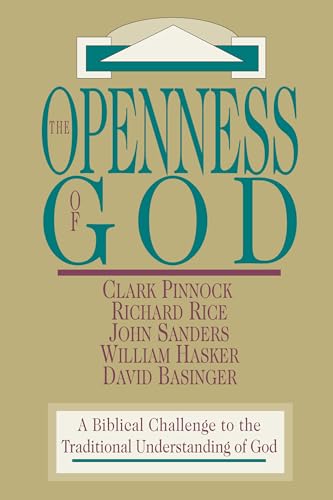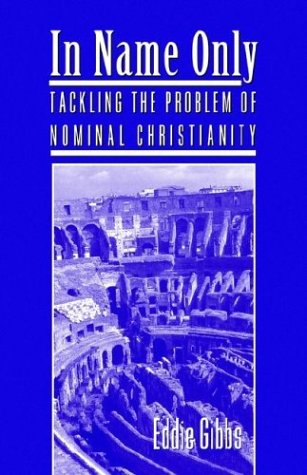The Muratorian Fragment and the Development of the Canon (Oxford Theological Monographs)
Written by Geoffrey Mark Hahneman Reviewed By Peter M. HeadThis book is a detailed assessment of the date and contents of the Muratorian Fragment (an early list of books of the NT) and its place in the history of the formation of the NT canon. It will undoubtedly take its place as the standard study of the various issues raised by the Fragment (=MF), and future work on the development of the NT canon will have to reckon with its clear display of the evidence, its bibliographical thoroughness and its controversial conclusions.
In his introduction, Hahneman argues that the consensus hypothesis—that the canon of the NT was more or less settled by ad 200 (with Westcott, Bruce, Metzger, etc.)—depends ‘primarily upon the evidence of the MF’. This hypothesis would, in his view, be refuted if in fact the Fragment were to be dated in the fourth century (following A.C. Sundberg, ‘Canon Muratori: A Fourth-Century List’, HTR 66 (1973), 1–41). Such a conclusion would also necessitate a reappraisal of the history of the canon.
This first chapter discusses the ‘Background’ of the MF’, offering a Latin text (no translation), a thorough discussion of the language of the Fragment (a fourth-century Latin translation of a probable Greek original), as well as a discussion of the codex in which it was found (a compilation of primarily fourth-century works). Provenance, date and authorship questions are briefly canvassed, but remain uncertain (hence the rest of the book!). MF says Hennas wrote the Shepherd quite lately in our time (nuperrime temporibus nostris) in the city of Rome, when on the throne of the church of the city of Rome the bishop Pius, his brother, was seated’ (lines 73–77). Since Pius was bishop from ad 140 to 154, this contemporary reference has generally been regarded as evidence for dating MF late in the second century. In Chapter 2 (The Shepherd of Hermas’) Hahneman argues on internal grounds that the Shepherd should be dated around ad 100, and was almost certainly not written by the brother of Pius (hence the Fragment is wrong on two counts). He further argues that the secondary status given to the Shepherd in the Fragment does not fit with the more positive attitude to the Shepherd in the second century (Irenaeus, Clement of Alexandria, etc.), but with the more nuanced position common in the fourth century (after Eusebius). The conclusion to be drawn from these three factors is that dating the MF on the basis of its (extremely suspect) statements about the Shepherd of Hermas is an extremely dubious procedure. (Against this it might be suggested that disputed conclusions reached on the basis of observations about the Shepherd of Hermas—hardly the most perspicuous document in Christian antiquity—are scarcely a secure basis from which to criticize MF.)
Chapter 3, ‘The Formation of the Canon’, is the heart of the argument. Hahneman defines a ‘canon’ as ‘a closed collection of “scripture”, to which nothing can be added and from which nothing can be subtracted’, while ‘Scripture’ refers to ‘religious literature that is appealed to for religious authority’ (p. 72). By using this definition he seeks to show that although books of the NT may have been regarded as ‘scripture’ in Christian circles, they can only be described as canonical if they form part of a closed collection. This kind of closed collection is attested only in the fourth-century catalogues (very thoroughly surveyed in Chapter 4), which arise from a ‘conceptual shift from scriptures to canon’ (p. 172). The MF should take its place among the fourth-century lists as a further witness to the decisive latest stage in the formation of the NT canon (Ch. 6). This results in a more gradual process of canon formation than the traditional model (as sketched out briefly in Ch. 3).
Hahneman’s argument hinges on the validity of his definitions, and his assessment of the approach to NT books taken by Irenaeus (and others around ad 200). In my mind this strict differentiation between ‘canon’ and ‘scripture’ corresponds neither to English usage (see OED), nor to Greek usage in the early period (see TDNT III, pp. 600ff.). A more nuanced position is necessary which will take account of the fact that the Greek term was used (within the early church, as elsewhere) in two ways: to refer to a rule, norm or standard (e.g.Gal. 6:16); and to refer to a list or table or collection. Thus there seems to have been a progression from speaking about a rule (kanōn) of faith, referring to the apostolic gospel or the new covenant, to speaking about a collection of documents which are recognized as containing this faith (by virtue of their apostolicity, antiquity, catholicity and ubiquity). But this progression assumes an essential continuity. Athanasius (ad 367) suggested that books are included in the canon because they are both ‘handed down’ and ‘accredited as Divine’. But Athanasius’s ‘accredited as Divine’ is not essentially different from the earlier conviction (in Justin, Irenaeus, Tertullian, Origen, etc.) that NT books were ‘Scripture’ because they were understood to be divinely inspired (as was the OT: see already Josephus, Against Apion, 1.37ff.). Hahneman is right to draw attention to the cataloguing process of the fourth century, but he has not shown that this was an essentially new departure rather than the natural consequences of convictions long held within the Christian church.
In particular he minimizes the importance of two second-century characters: Marcion and Irenaeus. He claims that Marcion did not reject other gospels (he only knew Luke) and that his redaction of Luke and Paul was not very radical. The crucial point, however, regardless of what Marcion himself actually did (and here I disagree with Hahneman), is that he was criticized by many key leaders (including Irenaeus and Tertullian) for rejecting the other gospels and other portions of the NT (see e.g. Tertullian, Adv. Marc. IV.3). This presumes that they had a concept of a collection from which it was illegitimate to delete books (i.e. a kind of canon!). Secondly, Irenaeus (around ad 180) clearly says that there are only four gospels (no more, no less: Adv. Haer. III.11.8). Thus he clearly attests the concept of a fourfold Gospel-‘canon’. Hahneman evades this by arguing that Irenaeus’s idea was an innovation; but this underestimates Irenaeus’s dependence upon pre-existent traditions about the gospels (probably obtained from Papias and Polycarp) and is further unlikely in view of the evidence of Tatian’s Diatessaron (a compilation dependent upon the four gospels and little else, from around ad 170). In any case, it is clear that Irenaeus and Tertullian (to mention only those we have cited) do have a conception of a closed gospel canon around ad 200. Hahneman’s argument against this is extremely weak: he argues that the production of numerous additional gospels would not have occurred if a fourfold canon was established. But this is a confusion of categories: the additional gospels were the product of heterodox groups opposed to the orthodox quartet (and often, in fact, dependent upon material from the canonical gospels).
Whether Hahneman has established the fourth-century date for MF I doubt, but I leave that to the patristic experts (the MF refers to five heretical groups, all from the second century; cf. E. Ferguson, ‘Canon Muratori: Date and provenance’, Studia Patristica XVII.2 (1982), 677–683). He has surely not succeeded in his reorientation of the history of the development of the canon, which was his major argument in favour of redating MF. An alternative historical development, however, would need a long book, doing for the NT what Roger Beckwith has done for the OT (a worthwhile research project for a reader of Themelios).
Peter M. Head
Peter M. Head
Tyndale House
Cambridge, England, UK







